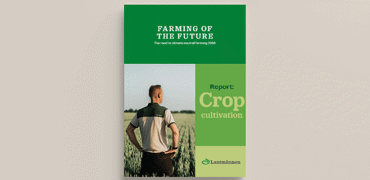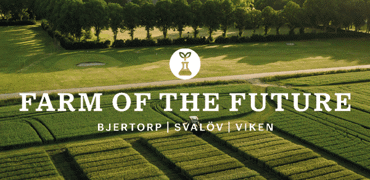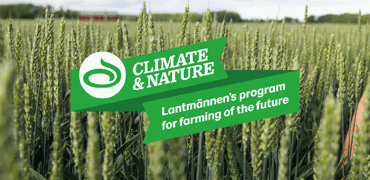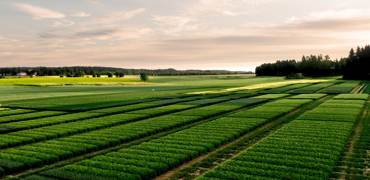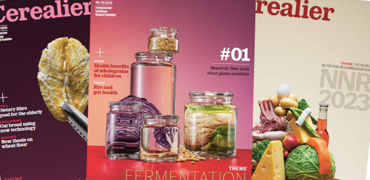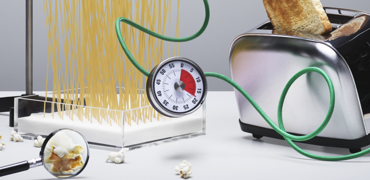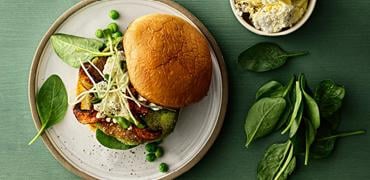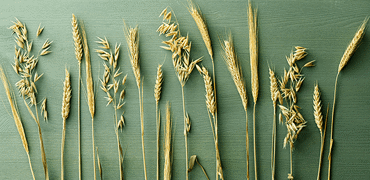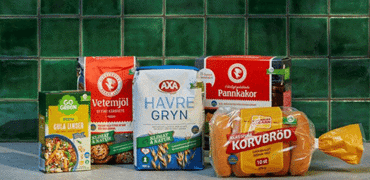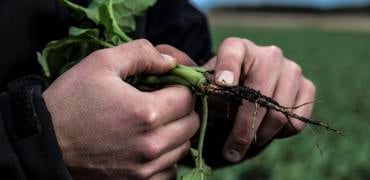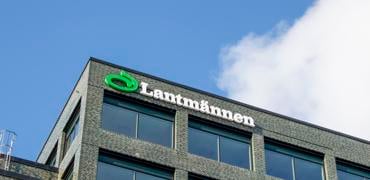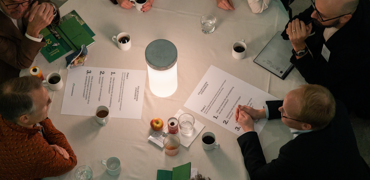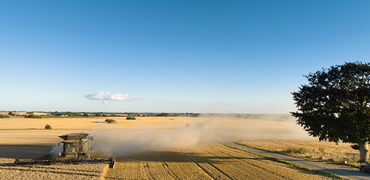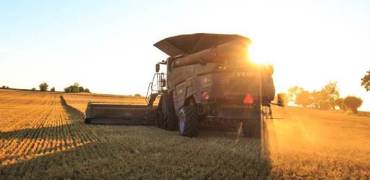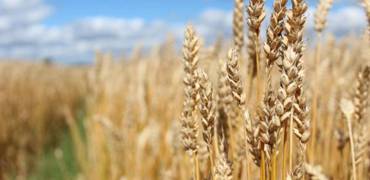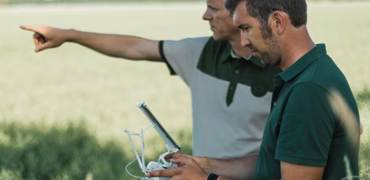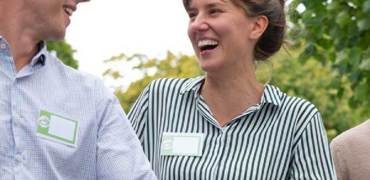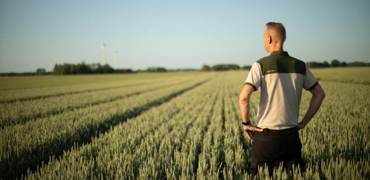We are now designing the first fossil-free value chain for food
The transition to a fossil-free society is called for in every industry. With the introduction of fossil-free mineral fertilizer, all of the components for a fossil-free value chain for food are now available. Lantmännen’s ambition is to lead the way in this development, and package it as an offering to the market. Lantmännen’s head of sustainability, Claes Johansson, talks about fossil-free farming of the future, already a possibility today.
It is tremendously exciting that this is now becoming a reality. Fossil-free mineral fertiliser has been a big issue for as long as I have followed the development of the agricultural industry within the sustainability area and the solution has always seemed to be far in the future. The fossil-dependent production of mineral fertilizer has been the last piece of the jigsaw to change in order to make agriculture fossil-free. Now we are finally at a point where the product is developed and can begin to be sold, through a collaboration between Yara and Lantmännen. It is a big step that allows us to showcase food produced in an essentially fossil-free value chain. I hope and believe that this paves the way for more value chains and businesses that will make the same transition.
The technical solutions for fossil-free agriculture are already available today. How far we have come with the upscaling to 2030 is now determined by the market’s appetite for real change and what conditions the policy creates.
The step towards fossil-free agriculture is demonstrated in our Climate & Nature cultivation programme with grain that as early as next year will have basically been produced fossil-free.
When we started Climate & Nature in 2015, approximately 80 per cent of the energy used in the value chain for the products included in the cultivation programme were fossil. Since then, the fossil component has gradually decreased with the phasing out of fossil fuel in driers and mills, as well as the use of green electricity. A big step was taken in 2020 when fossil-free fuel in tractors and combine harvesters was introduced as a new criterion in the cultivation programme. This then resulted in a fall of approximately 15 percentage points in fossil energy use.
By now introducing fossil-free mineral fertiliser, an additional reduction of approximately 40 percentage points has been achieved. What remains is less than 5 per cent fossil energy use in the entire value chain from field to fork. The last part is the sum of several smaller flows that are currently difficult to access, for example energy use in the production line, plant protection products and certain packaging.
We should be more transparent about the fact that it is difficult to achieve 100% freedom from fossil fuels in a society where dependence on fossil fuels permeates everything. It is not easy to establish where demarcations should be made and how many steps in the value chain should be included, but it is a job that must be done in order to drive the work in a credible manner.
We have made our own analysis and definition that we think is reasonable and practically possible to work with. A common definition and verification of what fossil-free is in a food chain is something we are calling for. We have now addressed the largest parts of the measures we presented and are making great strides in the concept of a fossil-free value chain which, if scaled properly, would contribute to major climate gains. With fossil-free mineral fertilizer, together with the other criteria in the Climate & Nature cultivation programme, half the climate footprint from wheat cultivation has been removed. The remaining climate footprint mainly comes from biological processes in the arable land.
But aren’t the costs a big obstacle? Could food get even more expensive than what it is in these times? Sure, costs are the main obstacle that has delayed this development. The small margins that exist in grain cultivation make it impossible to manage a significant increase in the cost of plant nutrients.
However, the costs can be made manageable if we look at them as a part of the entire value chain and that it is the value chain that must be converted and become fossil free, not just agriculture. Approximately 50 Swedish öre extra on a regular loaf of bread that costs about 25 kronor is needed for the costs of measures on the farm to be covered. But if the whole cost lands solely on the farmer, who receives approximately 1 of the 25 kronor that the consumer pays, then it becomes insurmountable. We are completely dependent on how the market and policy support us. So, it is gratifying that there is currently increasingly greater interest in the food industry in helping each other. Fossil-free is a clear concept with a market value, that can be communicated simply.
On 8 November, we gathered business leaders and society actors, who are leading the development of a fossil-free value chain for food that simultaneously strengthens Sweden’s food supply, for a discussion about this important issue. You are warmly invited to listen to the recording of our live-streamed seminar (in Swedish).






